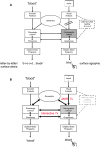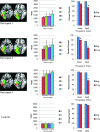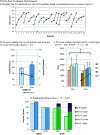Treatment for Alexia With Agraphia Following Left Ventral Occipito-Temporal Damage: Strengthening Orthographic Representations Common to Reading and Spelling
- PMID: 26110814
- PMCID: PMC4686312
- DOI: 10.1044/2015_JSLHR-L-14-0286
Treatment for Alexia With Agraphia Following Left Ventral Occipito-Temporal Damage: Strengthening Orthographic Representations Common to Reading and Spelling
Abstract
Purpose: Damage to left ventral occipito-temporal cortex can give rise to written language impairment characterized by pure alexia/letter-by-letter (LBL) reading, as well as surface alexia and agraphia. The purpose of this study was to examine the therapeutic effects of a combined treatment approach to address concurrent LBL reading with surface alexia/agraphia.
Method: Simultaneous treatment to address slow reading and errorful spelling was administered to 3 individuals with reading and spelling impairments after left ventral occipito-temporal damage due to posterior cerebral artery stroke. Single-word reading/spelling accuracy, reading latencies, and text reading were monitored as outcome measures for the combined effects of multiple oral re-reading treatment and interactive spelling treatment.
Results: After treatment, participants demonstrated faster and more accurate single-word reading and improved text-reading rates. Spelling accuracy also improved, particularly for untrained irregular words, demonstrating generalization of the trained interactive spelling strategy.
Conclusion: This case series characterizes concomitant LBL with surface alexia/agraphia and demonstrates a successful treatment approach to address both the reading and spelling impairment.
Figures






References
-
- Beeson P. M. (n.d.). Arizona Word Length List. Unpublished assessment, University of Arizona, Tucson, AZ.
-
- Beeson P. M. (1998). Treatment for letter-by-letter reading: A case study. In Helm-Estabrooks N. & Holland A. L. (Eds.), Clinical decision making in aphasia treatment (pp. 153–217). San Diego, CA: Singular.
-
- Beeson P. M., & Insalaco D. (1998). Acquired alexia: Lessons from successful treatment. Journal of the International Neuropsychological Society, 4, 621–635. - PubMed
Publication types
MeSH terms
Grants and funding
LinkOut - more resources
Full Text Sources

